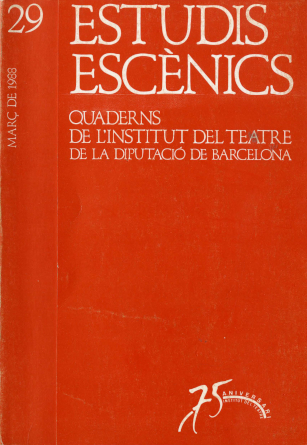La vídeo-«performance»
Resum
El cine del director soviético Dziga Vertov visto como «cine-ojo», como un intento de aproximación del cine y la nueva visión tecnológica a la realidad, y entendido como contra-cine, anti-cine, como cine de información y expresión, podría ser el antecedente más importante del vídeo-arte, precisamente, también, en tanto que opción anti-artística, anti-comercial, anti- estética. El vídeo-arte de los años sesenta es un vídeo antitelevisivo. La televisión se equipara al cine de los años veinte. Un vídeo-arte de happening, de documento, la lucubración, de agitación política: un vídeo-arte con mucha performance.
Real-time, on-live, action, he aquí tres de los principios más importantes que caracterizan tanto los años veinte soviéticos como los años sesenta norteamericanos. El cine de vanguardia y el vídeo-arte: Vertov y Paik. El paseo en taxi de Nam June Paik el 4 de octubre de 1965, performance grabada en vídeo, marcó el inicio de una larga serie de experiencias: sus colaboraciones con Charlette Moorman, por ejemplo, sin olvidar que en aquel mismo momento Rauschenberg, Merce Cunningham, Allan Kaprow, Jim Dine, Yoko Ono, Trisha Brown, Yvonne Rainer,... participaban en la realización de una vídeo-performance compleja y múltiple.
Ya posteriormente, en pleno período conceptual, otros nombres se dedicaron a ello: Les Levine, Aldo Lambellini, Keith Sonnier, Joan Jonas, Vito Acconci, Dan Graham, Rebeca Horn, General Idea, Ant Farm,...














